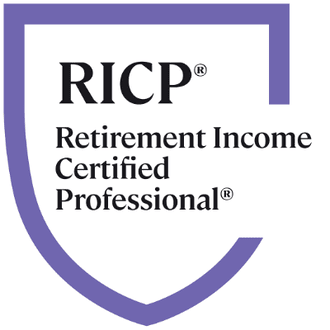
Bucketing Approach to Retirement Planning for Public Service Professionals
Retirement planning can feel daunting, with countless options, strategies, and uncertainties about the future. Many retirees wrestle with how to ensure that their hard-earned savings last through retirement. One method that simplifies this process and offers peace of mind is the bucketing approach to retirement planning.
The bucketing approach involves segregating your money into buckets or pots depending on your time horizon for needing the money and your level of risk tolerance. This blog focuses on the bucketing approach and its application to public service workers.
A Simplified Example
Bucket 1 would contain cash or cash equivalents such as high-yield savings, money market funds, short-term CDs, and perhaps short-term treasuries. You will note that the money is very liquid without losing principal. This money can be used in the event of a market downturn. Because it is more short-term, the interest rate is not very high, but the risk of losing money is not there.
The interesting twist for public service workers is that they often get a monthly pension. This improves the success of the bucketing approach in retirement since you have an extra monthly income source to tap into upon retirement. As a result, bucket 1 might not have to be as significant.
Bucket 2 is more than 2-5 years of money that can be used for big purchases such as a new car. A remodel of your home or a new home, etc. Since the time horizon is more extended, perhaps adding some equity exposure makes sense. Maybe you could have a balanced portfolio or a more conservative income portfolio. Since the time horizon is shorter, less than half equity exposure would make sense.
Bucket 3 is more long-term money. For retirees, this could be the traditional 60/40 (stocks/bonds) balanced portfolio which has done well over time, or perhaps a growth portfolio of 70/30. The idea is that the time horizon is more significant than five years so that it can sustain an extended bear market. The bulk of your retirement money would be in Bucket 3. So it is essential to manage this bucket carefully.
How much would you keep in Bucket 1? Well, this is the most challenging choice to make. Bucket 1 is to meet your immediate needs. So, having at least 12-18 months of living expenses in cash equivalents might make sense. The point is not to take the money from buckets 2 and 3 in a bear market since you will sell at a loss. Instead, take the money from bucket one until the market improves.
Of course, this is easier said than done! Many investors get anxious when there is a bull market and then have 18 months of cash sitting on the sidelines! So resisting temptation and understanding the purpose of the all-important Bucket 1 is the key to a successful bucketing approach.
Why Use the Bucketing Approach?
- Psychological Comfort
Many retirees are understandably anxious about market volatility, especially during the early years of retirement. By having your short-term needs met through safe investments, you reduce the risk of having to sell growth-oriented assets during a market downturn. This creates peace of mind, knowing that no matter what the markets do, your immediate expenses are covered. - Flexibility in Asset Allocation
With the bucketing approach, you can tailor your asset allocation based on your specific goals and risk tolerance for each time period. As the years progress and you move from one bucket to the next, you can adjust your investments to suit your changing needs. - Protection from Sequence of Returns Risk
One of the greatest dangers retirees face is sequence of returns risk—the risk of experiencing poor market returns in the early years of retirement. If you are forced to sell growth investments at a loss to cover living expenses, you may deplete your portfolio faster than expected. The bucketing approach helps mitigate this risk by having a cushion of safer, short-term assets that protect your growth assets in the early stages.
How to Set Up Your Buckets
Step 1: Determine Your Monthly and Annual Expenses
Before creating your buckets, take a close look at your anticipated living expenses during retirement. This includes everything from housing, healthcare, and groceries to travel, entertainment, and insurance. Your short-term bucket should be large enough to cover these essential costs for the next two years. As noted, if you have a public sector pension, then Bucket 1 can be smaller.
Step 2: Calculate the Size of Each Bucket
Once you know your expenses, calculate how much you’ll need in each bucket. For instance, if your annual expenses are $60,000, and you want 2 years’ worth of expenses in your short-term bucket, you would need at least $120,000 in liquid, low-risk assets.
Step 3: Rebalance Regularly
As time passes and you draw from your short-term bucket, you will need to replenish it by shifting funds from Buckets 2 and 3. A regular rebalancing plan, perhaps every year or two, ensures that your buckets remain appropriately funded.
There are, of course, other approaches to retirement income planning. For instance, the 4% rule, in which you take up to 4% per year out of your retirement account. However, the problem with this approach is that you will be removing money, perhaps at a higher rate than the returns during a market downturn.
Is the Bucketing Approach Right for You?
While the bucketing approach offers many benefits, it’s important to consider whether it aligns with your personality, financial goals, and risk tolerance. If you are someone who is highly risk-averse and prefers clear, segmented planning, this method might offer the psychological comfort you need.
So my preference is the bucketing approach since you use Bucket 1 in market corrections. But, of course, there is no one size fits for the bucketing approach. Some want a large Bucket 1, and others want a smaller Bucket 1. This all depends on your level of risk and capacity for risk-taking, which should be discussed with a financial advisor before proceeding. A public pension makes the bucketing approach even more appealing, as you don't need to set aside as much money in Bucket 1. The bucketing approach can be especially attractive to public service workers.
Conclusion
The bucketing approach to retirement planning provides a structured yet flexible way to manage your savings. By dividing your assets into short, medium, and long-term buckets, you create a plan that adapts to your needs at different stages of retirement. This strategy not only gives you peace of mind in the early years but also positions you for long-term success, allowing your investments to grow while maintaining security.
In a world of financial uncertainty, the bucketing strategy is a simple approach to securing your financial future. Contact me on the page below if I can help you understand how the bucketing approach will work for your retirement income planning.
*This content is developed from sources believed to be providing accurate information. The information provided is not written or intended as tax or legal advice and may not be relied on to avoid federal tax penalties. Individuals are encouraged to seek advice from their own tax or legal counsel. Individuals involved in the estate planning should work with an estate planning team, including personal legal or tax counsel. Neither the information presented nor any opinion expressed constitutes a representation of a specific investment or the purchase or sale of any securities. Asset allocation and diversification do not ensure a profit or protect against loss in declining markets.





